This article's tone or style may not reflect the encyclopedic tone used on Wikipedia. (October 2014) (Learn how and when to remove this template message) |

A toy is an item that is used in play, especially one designed for such use. Playing with toys can be an enjoyable means of training young children for life in society. Different materials like wood, clay, paper, and plastic are used to make toys. Many items are designed to serve as toys, but goods produced for other purposes can also be used. For instance, a small child may fold an ordinary piece of paper into an airplane shape and "fly it". Newer forms of toys include interactive digital entertainment. Some toys are produced primarily as collectors' items and are intended for display only.
The origin of toys is prehistoric; dolls representing infants, animals, and soldiers, as well as representations of tools used by adults are readily found at archaeological sites. The origin of the word "toy" is unknown, but it is believed that it was first used in the 14th century. Toys are mainly made for children. The oldest known doll toy is thought to be 4,000 years old.
Playing with toys is considered to be important when it comes to growing up and learning about the world around us. Younger children use toys to discover their identity, help their bodies grow strong, learn cause and effect, explore relationships, and practice skills they will need as adults. Adults on occasion use toys to form and strengthen social bonds, teach, help in therapy, and to remember and reinforce lessons from their youth.
Contents
History
Most children have been said to play with whatever they can find, such as sticks and rocks. Toys and games have been unearthed from the sites of ancient civilizations. They have been written about in some of the oldest literature. Toys excavated from the Indus valley civilization (3010–1500 BCE) include small carts, whistles shaped like birds, and toy monkeys which could slide down a string.
The earliest toys are made from materials found in nature, such as rocks, sticks, and clay. Thousands of years ago, Egyptian children played with dolls that had wigs and movable limbs which were made from stone, pottery, and wood. In Ancient Greece and Ancient Rome, children played with dolls made of wax or terracotta, sticks, bows and arrows, and yo-yos. When Greek children, especially girls, came of age it was customary for them to sacrifice the toys of their childhood to the gods. On the eve of their wedding, young girls around fourteen would offer their dolls in a temple as a rite of passage into adulthood.
The oldest known mechanical puzzle also comes from Greece and appeared in the 3rd century BC. The game consisted of a square divided into 14 parts, and the aim was to create different shapes from these pieces. In Iran "puzzle-locks" were made as early as the 17th century (AD).
Enlightenment era
Toys became more widespread with the changing attitudes towards children engendered by the Enlightenment. Children began to be seen as people in and of themselves, as opposed to extensions of their household and that they had a right to flourish and enjoy their childhood. The variety and number of toys that were manufactured during the 18th century steadily rose; John Spilsbury invented the first jigsaw puzzle in 1767 to help children learn geography. He created puzzles on eight themes – the World, Europe, Asia, Africa, America, England and Wales, Ireland and Scotland. The rocking horse (on bow rockers) was developed at the same time in England, especially with the wealthy as it was thought to develop children's balance for riding real horses.
Blowing bubbles from leftover washing up soap became a popular pastime, as shown in the painting The Soap Bubble (1739) by Jean-Baptiste-Siméon Chardin. Other popular toys included hoops, toy wagons, kites, spinning wheels and puppets. The first board games were produced by John Jefferys in the 1750s, including A Journey Through Europe. The game was very similar to modern board games; players moved along a track with the throw of a dice (a teetotum was actually used) and landing on different spaces would either help or hinder the player.
In the nineteenth century, the emphasis was put on toys that had an educational purpose to them, such as puzzles, books, cards and board games. Religiously themed toys were also popular, including a model Noah's Ark with miniature animals and objects from other Bible scenes. With growing prosperity among the middle class, children had more leisure time on their hands, which led to the application of industrial methods to the manufacture of toys.
More complex mechanical and optics-based toys were also invented. Carpenter and Westley began to mass-produce the kaleidoscope, invented by Sir David Brewster in 1817, and had sold over 200,000 items within three months in London and Paris. The company was also able to mass-produce magic lanterns for use in phantasmagoria and galanty shows, by developing a method of mass production using a copper plate printing process. Popular imagery on the lanterns included royalty, flora and fauna, and geographical/man-made structures from around the world. The modern zoetrope was invented in 1833 by British mathematician William George Horner and was popularized in the 1860s. Wood and porcelain dolls in miniature doll houses were popular with middle class girls, while boys played with marbles and toy trains.
Mass market
The golden age of toy development was at the turn of the 20th century. Real wages were rising steadily in the Western world, allowing even working-class families to afford toys for their children, and industrial techniques of precision engineering and mass production was able to provide the supply to meet this rising demand. Intellectual emphasis was also increasingly being placed on the importance of a wholesome and happy childhood for the future development of children. William Harbutt, an English painter, invented plasticine in 1897, and in 1900 commercial production of the material as a children's toy began. Frank Hornby was a visionary in toy development and manufacture and was responsible for the invention and production of three of the most popular lines of toys based on engineering principles in the twentieth century: Meccano, Hornby Model Railways and Dinky Toys.
Meccano was a model construction system that consisted of re-usable metal strips, plates, angle girders, wheels, axles and gears, with nuts and bolts to connect the pieces and enabled the building of working models and mechanical devices. Dinky Toys pioneered the manufacture of die-cast toys with the production of toy cars, trains and ships and model train sets became popular in the 1920s. The Britain's company revolutionized the production of toy soldiers with the invention of the process of hollow casting in lead in 1893 – the company's products remained the industry standard for many years.
Puzzles became greatly fashionable as well. In 1893, the English lawyer Angelo John Lewis, writing under the pseudonym of Professor Hoffman, wrote a book called Puzzles Old and New. It contained, amongst other things, more than 40 descriptions of puzzles with secret opening mechanisms. This book grew into a reference work for puzzle games and was very popular at the time. The Tangram puzzle, originally from China, spread to Europe and America in the 19th century.
During the Second World War, some new types of toys were created through accidental innovation. After trying to create a replacement for synthetic rubber, the American Earl L. Warrick inadvertently invented "nutty putty" during World War II. Later, Peter Hodgson recognized the potential as a childhood plaything and packaged it as Silly Putty. Similarly, Play-Doh was originally created as a wallpaper cleaner. In 1943 Richard James was experimenting with springs as part of his military research when he saw one come loose and fall to the floor. He was intrigued by the way it flopped around on the floor. He spent two years fine-tuning the design to find the best gauge of steel and coil; the result was the Slinky, which went on to sell in stores throughout the United States.
After the Second World War as society became ever more affluent and new technology and materials (plastics) for toy manufacture became available, toys became cheap and ubiquitous in households across the Western World. Among the more well known products of the 1950s there was the Danish company Lego's line of colourful interlocking plastic brick construction sets, Rubik's Cube, Mr. Potato Head, the Barbie doll and Action Man. Today there are computerized dolls that can recognize and identify objects, the voice of their owner, and choose among hundreds of pre-programmed phrases with which to respond. The materials that toys are made from have changed, what toys can do has changed, but the fact that children play with toys has not.
Culture
The act of children's play with toys embodies the values set forth by the adults of their specific community, but through the lens of the child's perspective. Within cultural societies, toys are a medium to enhance a child's cognitive, social, and linguistic learning.
In some cultures, societies utilize toys as a way to enhance a child's skillset within the traditional boundaries of their future roles in the community. In Saharan and North African cultures, play is facilitated by children through the use of toys to enact scenes recognizable in their community such as hunting and herding. The value is placed in a realistic version of development in preparing a child for the future they are likely to grow up into. This allows the child to imagine and create a personal interpretation of how they view the adult world.
However, in other cultures, toys are used to expand the development of a child's cognition in an idealistic fashion. In these communities, adults place the value of play with toys to be on the aspirations they set forth for their child. In the Western culture, the Barbie and Action-Man represent lifelike figures but in an imaginative state out of reach from the society of these children and adults. These toys give way to a unique world in which children's play is isolated and independent of the social constraints placed on society leaving the children free to delve into the imaginary and idealized version of what their development in life could be.
In addition, children from differing communities may treat their toys in different ways based on their cultural practices. Children in more affluent communities may tend to be possessive of their toys, while children from poorer communities may be more willing to share and interact more with other children. The importance the child places on possession is dictated by the values in place within the community that the children observe on a daily basis.
Child development
Toys, like play itself, serve multiple purposes in both humans and animals. They provide entertainment while fulfilling an educational role. Toys enhance cognitive behavior and stimulate creativity. They aid in the development of physical and mental skills which are necessary in later life.
One of the simplest toys, a set of simple wooden blocks is also one of the best toys for developing minds. Andrew Witkin, director of marketing for Mega Brands told Investor's Business Daily that, "They help develop hand-eye coordination, math and science skills and also let kids be creative." Other toys like marbles, jackstones, and balls serve similar functions in child development, allowing children to use their minds and bodies to learn about spatial relationships, cause and effect, and a wide range of other skills.
One example of the dramatic ways that toys can influence child development involves clay sculpting toys such as Play-Doh and Silly Putty and their home-made counterparts. Mary Ucci, Educational Director of the Child Study Center of Wellesley College, has demonstrated how such toys positively impact the physical development, cognitive development, emotional development, and social development of children.
Toys for infants often make use of distinctive sounds, bright colors, and unique textures. Through play with toys infants begin to recognize shapes and colors. Repetition reinforces memory. Play-Doh, Silly Putty and other hands-on materials allow the child to make t
Watch movie Toy online on Amazon
Watch movie Toy online
Watch The Movie On PrimeGangster Full HD Movie Download
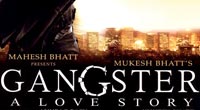
Love Story 2050 Full HD Movie Download
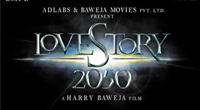
Gentleman Full HD Movie Download

Roja Full HD Movie Download
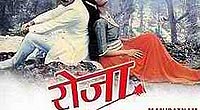
Apna Hath Jagannath Full HD Movie Download

Shehnai (1964) Full HD Movie Download
.jpg)
Shair Full HD Movie Download

Yaar Ghaddar Full HD Movie Download

Hoshiyar Full HD Movie Download

Thirumalai Full HD Movie Download

Summer School Full HD Movie Download

Swarga Seema Full HD Movie Download

Prashanth Veer Full HD Movie Download

Tantra Mantra Full HD Movie Download

Harry Potter and the Order of the Phoenix Full HD Movie Download

Samooham Full HD Movie Download

Ooyala Full HD Movie Download

Korukunna Priyudu Full HD Movie Download
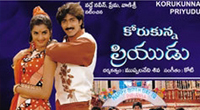
Jagat Khiladi Full HD Movie Download

Bhoot Bungla Full HD Movie Download
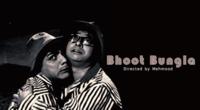
Mastan (Bengali) Full HD Movie Download
.jpg)
Download latest Movie from bollywood
- 1> baaghi 3
- 2> THE SKY IS PINK MOVIE FULL STORY AND REVIEW
- 3> Luka Chuppi
- 4> TO ALL THE BOYS I’VE LOVED BEFORE
- 5> Kabir Singh
- 6> Street Dancer 3D
- 7> Simmba
- 8> Gone Girl
- 9> The Girl Who Lived
- 10> Ludo
- 11> DILWALE DULHANIA LE JAYENGE
- 12> GUILTY
- 13> The Godfather
- 14> Adventures of Rusty
- 15> Sooryavanshi
- 16> Satyameva Jayate 2
- 17> Thappad
- 18> Bhool Bhulaiyaa 2
- 19> KGFChapter 2
- 20> Mardaani 2
- 21> Pinjar
- 22> Shivaji maharaj
- 23> Ek Villian 2
- 24> Hungama 2
- 25> Divergent
- 26> Mumbai Saga
- 27> The Internship
- 28> HIT (telugu)
- 29> Panga
- 30> The perfect date
- 31> 16 December
- 32> Gopala Gopala (Telugu)
- 33> Brahmastra
- 34> Gangubai Kathiawadi
- 35> Manmadhudu
- 36> Nenu local
- 37> Mahanati
- 38> Shatamanam bavathi
- 39> Lagaan
- 40> After
- 41> MOM
- 42> Shamshera
- 43> Raguvaran BTech
- 44> Khakee
- 45> The villain
- 46> OM
- 47> Mr. perfect
- 48> Bueatifull mind
- 49> Hichki
- 50> Gabbar Singh
- 51> Jogi
- 52> Before Sunrise
- 53> Before Sunset
- 54> Before Midnight
- 55> The Big Bull
- 56> Top Gun: Maverick
- 57> The Purge
- 58> The Sky is Pink
- 59> Laxmmi Bomb
- 60> Sadak 2
- 61> Sufna
- 62> Prithviraj
- 63> PK
- 64> Coolie No 1(2020)
- 65> Black Widow
- 66> Dear Zindagi
- 67> Dil Bechara
- 68> PHIR HERA PHERI
- 69> WAR
- 70> Dostana
- 71> RRR: Roudram Ranam Rudhiram
- 72> Maidan
- 73> Dabbang 3
- 74> Chhalaang
- 75> life as we know it
- 76> SherShaah
- 77> Sandeep Aur Pinky Faraar
- 78> Event Horizon
- 79> 83
- 80> Radhe: Your Most Wanted Bhai
- 81> Gunjan Saxena: The Kargil Girl
- 82> Mr India
- 83> Vivah
- 84> Anokha Bandhan
- 85> Ghost
- 86> Bhoot: Part One - The Haunted Ship
- 87> Haseen Dilruba
- 88> Laal Singh Chaddha
- 89> Qismat
- 90> Rajput
- 91> Drive
- 92> Dil Chahta Hai
- 93> Dil Ki Baazi
- 94> Dil Ka Rishta
- 95> Teesri Manzil
- 96> Dil
- 97> Love Aaj Kal
- 98> Khaali Peeli
- 99> Bunty Aur Babli 2
- 100> Atrangi Re
- 101> Gulabo Sitabo
- 102> Jodi
- 103> Suraj Pe Mangal Bhari
- 104> Deewana
- 105> Attack
- 106> Sardar Udham Singh
- 107> Toofan
- 108> THE LOVEBIRDS
- 109> Jersey
- 110> Ginny Weds Sunny
- 111> Thalaivi
- 112> Shiddat
- 113> Angels vs Zombies
- 114> Koi Mil Gya
- 115> Thank God
- 116> Bhuj: The Pride of India
- 117> Hum Aapke Hain Kaun
- 118> The Platform
- 119> Bird Box
- 120> Roohi Afzana
- 121> Torbaaz
- 122> Nikamma
- 123> World War Z
- 124> Extraction
- 125> Train to Busan
- 126> Life of Pi
- 127> SHAADI MEIN JROOR AANA
- 128> Himmat Aur Mehnat
- 129> To All The Boys: P.S. I Still Love You
- 130> Mimi
- 131> Good Newwz
- 132> Shubh Mangal Zyada Saavdhan
- 133> Raabta
- 134> Harry Potter and the Philosopher's Stone
- 135> Harry Potter and the Chamber of Secrets
- 136> Chhapaak
- 137> War of the Worlds
- 138> Harry Potter and the Prisoner of Azkaban
- 139> Harry Potter and the Goblet of Fire
- 140> MURDER MYSTERY
- 141> Shakuntala Devi
- 142> Bachchan Pandey
- 143> Jayeshbhai Jordar
- 144> Sheer Qorma
- 145> Saina
- 146> 'O' Pushpa I hate tears
- 147> Kedarnath
- 148> MS Dhoni The Untold Story
- 149> Chhichhore
- 150> Badhaai Ho
- 151> Unstoppable
- 152> Oz the Great And Powerful
- 153> The Girl on the Train
- 154> Haathi Mere Saathi 2020
- 155> The Conjuring: The Devil Made Me Do It
- 156> Gandhi Se Pehle Gandhi
- 157> The Song of Scorpions
- 158> Srimanthudu
- 159> Hello Guru Prema Kosame
- 160> Beauty and The Beast
- 161> Black Panther
- 162> Charlie and the Chocolate Factory
- 163> Bole Chudiyan
- 164> Fidaa
- 165> Duvvada Jagannadham
- 166> Bruce Lee: The Fighter
- 167> Hyper
- 168> Yaara
- 169> Red (2020)
- 170> Shivam
- 171> That Is Mahalakshmi
- 172> Nishabdham
- 173> Aashram 2020 web series
- 174> Laxmii
- 175> Mismatched
- 176> STUDENT OF THE YEAR 2
- 177> NAIL POLISH
- 178> Ramprasad Ki Tehrvi
- 179> KAAGAZ
- 180> 12 o Clock
- 181> The Power
- 182> bolo hau
- 183> Tribhanga
- 184> JAMUN
- 185> Madam Chief Minister
- 186> Maasaab
- 187> Aadhaar
- 188> Tanhaji
- 189> Bhaagi 3
- 190> Bhootnath
- 191> MALANG
- 192> Jai Mummy Di
- 193> Haathi Mere Saathi 2021
- 194> Shakeela
- 195> Unpaused
- 196> Annayya
- 197> Vamsoddharakudu
- 198> Mrugaraju
- 199> Narasimha Naidu
- 200> Sankranti
- 201> Manasu Maata Vinadhu
- 202> Anjaane
- 203> Apaharan
- 204> Bachke Rehna Re Baba
- 205> Bewafaa
- 206> Roohi
- 207> Radhe
- 208> Zindagi Khoobsoorat Hai
- 209> Yeh Mohabbat Hai
- 210> Yeh Kya Ho Raha Hai?
- 211> The Tomorrow War
- 212> DehradunDiary
- 213> Meri Shaadi Karaoo
- 214> Matruu Ki Bijlee Ka Mandola
- 215> No One Killed Jesica
- 216> Aag Ka Goola
- 217> Eight Million Dollars
- 218> Three Hundred
- 219> Cats and Dog
- 220> Decoy
- 221> Gold Rush
- 222> You Have Got Mail
- 223> Final Destination three
- 224> Tofan
- 225> Jungle
